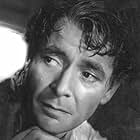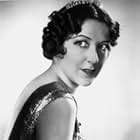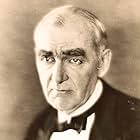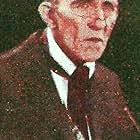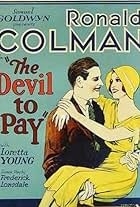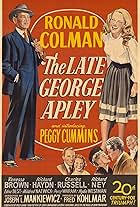After years of failure, Maurice Blake becomes a beachcomber on an island in the Samoas, earning a risky living by diving for pearls with Philip Jardine, the disinherited son of a San Francis... Read allAfter years of failure, Maurice Blake becomes a beachcomber on an island in the Samoas, earning a risky living by diving for pearls with Philip Jardine, the disinherited son of a San Francisco millionaire. When Philip is killed by a shark, his half-caste common-law wife Rosa info... Read allAfter years of failure, Maurice Blake becomes a beachcomber on an island in the Samoas, earning a risky living by diving for pearls with Philip Jardine, the disinherited son of a San Francisco millionaire. When Philip is killed by a shark, his half-caste common-law wife Rosa informs Maurice that Philip's father has forgiven him, and she persuades him to assume Philip'... Read all
- Awards
- 1 win
- Bishop Saville
- (as Alec Francis)
- Flapper
- (uncredited)
- Little Girl
- (uncredited)
- Director
- Writers
- All cast & crew
- Production, box office & more at IMDbPro
Storyline
Did you know
- TriviaA Thief in Paradise (1925) is a lost silent film.
The prologue of this film is set in an unconvincing studio mock-up of Samoa, where two broken men have crossed paths. One of them is Maurice Blake (Ronald Colman), an immoral drifter. The other is Philip Jardine (John Patrick), the scapegrace estranged son of a wealthy California family. Blake and Jardine are not friends, but they pool their meagre funds to charter the services of two native gillies and a raft, intending to go pearl-diving in the hope of making some money.
The obscure actor John Patrick bore a strong resemblance to Ronald Colman: in this film, Colman sports his usual moustache whilst Patrick has beard-stubble but no lip spinach. Also, they dress differently during the Samoan sequence (Patrick in dark clothes, Colman in tropical whites) ... but both men have the same height and build, the same darkly handsome facial structure. I noticed this without anticipating that it would become significant later in the movie.
In an impressive underwater sequence, both men find a large oyster containing an impressive pearl. (It's so perfectly spherical, it looks like a white gumball; it would have been much more convincing if the prop man had made a baroque pearl.) In an underwater stosh-up, Blake and Jardine fight over the pearl ... but only Blake comes up for air. The camera-work is careful to establish that Jardine drowned by accident, not at Blake's hands (so as to retain some audience sympathy for Colman's character).
Jardine has been making time with a local tootsie named Rosa (Aileen Pringle). When she learns of his drowning, she approaches Blake with news. An envelope from San Francisco has just arrived for Jardine, containing $500 and a 'come home, all is forgiven' letter from Jardine's millionaire father, seeking reconciliation with his estranged son ... whom he hasn't seen in many years. Since Blake resembles the deceased Philip Jardine, Rosa suggests that she and Blake should go to the Jardine home ... where Blake will impersonate the dead man and work himself into the Jardine family's good graces, so that he and Rosa can pluck the suckers.
Blake and Rosa show up at the incredibly posh Nob Hill mansion of the Jardine family ... where Blake is instantly accepted by Noel Jardine as his long-lost son. The only member of the Jardine household who fails to accept Blake as Philip Jardine is the family's Alsatian ... who surely cannot have been born yet when the real son was last in this house.
The impostor Blake is living in high style, and soon he meets attractive Helen Saville, who lives with her father in the mansion next-door over. (Her father is an Anglican bishop: why is he living in such an expensive house?) Helen assumes that Blake is the long-lost Philip, her childhood sweetheart... and now a real romance develops. Will Blake turn honest so that he can court Helen fairly, or will he stick to his original plan and rob these people blind? And will Rosa stand by if Blake abandons his criminal scheme?
The plot of this film is jaw-droppingly unbelievable. The real point of this movie is the pointless spectacle. To welcome home the long-lost son, Noel Jardine sponsors a polo match between two teams of gorgeous young women: blondes versus brunettes! (They play without helmets, which is suicidal behaviour.) A soiree at the Jardine mansion includes a spectacular dance number featuring a giant papier-mache oyster shell, which opens up to disgorge Aileen Pringle wearing a gigantic tiara and artificial pearls. She and her dancers proceed to act out a pantomime which (in Hamlet fashion) re-enacts the incident preying upon Blake's guilty conscience: the death of Philip Jardine.
SPOILER COMING: This movie stars Ronald Colman, so there's never any doubt that he'll eventually reform. Sure enough: he confesses all, and Helen Saville (the bland Doris Kenyon) decides to marry him anyway. They soar off to their honeymoon aboard a private 'plane ... but who's paying for the honeymoon? The bishop's flock?
Character actor Claude Gillingwater, as Noel Jardine, gives the same performance he would later give in several Shirley Temple movies: the dyspeptic miser who turns out to have a heart of gold. The scenes of various mansions in San Francisco are interesting, but it really angered me to see so much money squandered by the fictional characters in this movie, and by the Goldwyn Studio in its creation of this big-budget film. Also, the movie tries to have it both ways: we're expected to enjoy the decadence and opulence depicted in this movie, but there's a moralistic renunciation near the climax of the film which is clearly intended to send us out of the cinema with clean consciences. I'll rate this hypocritical movie 6 out of 10.
- F Gwynplaine MacIntyre
- Aug 15, 2003
- Permalink
Details
- Runtime1 hour 20 minutes
- Color
- Sound mix
- Aspect ratio
- 1.33 : 1
Contribute to this page










